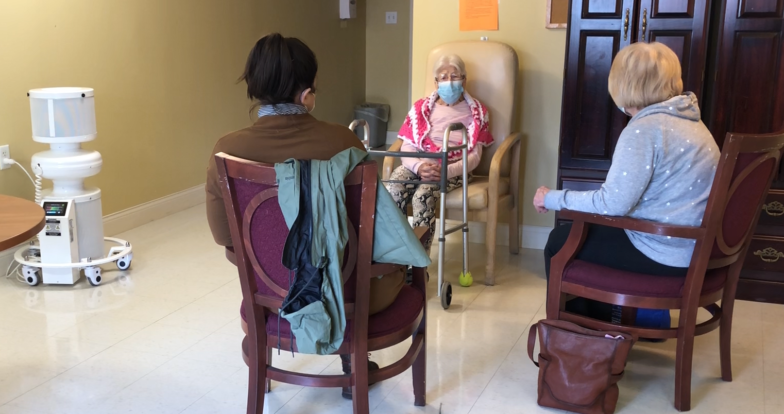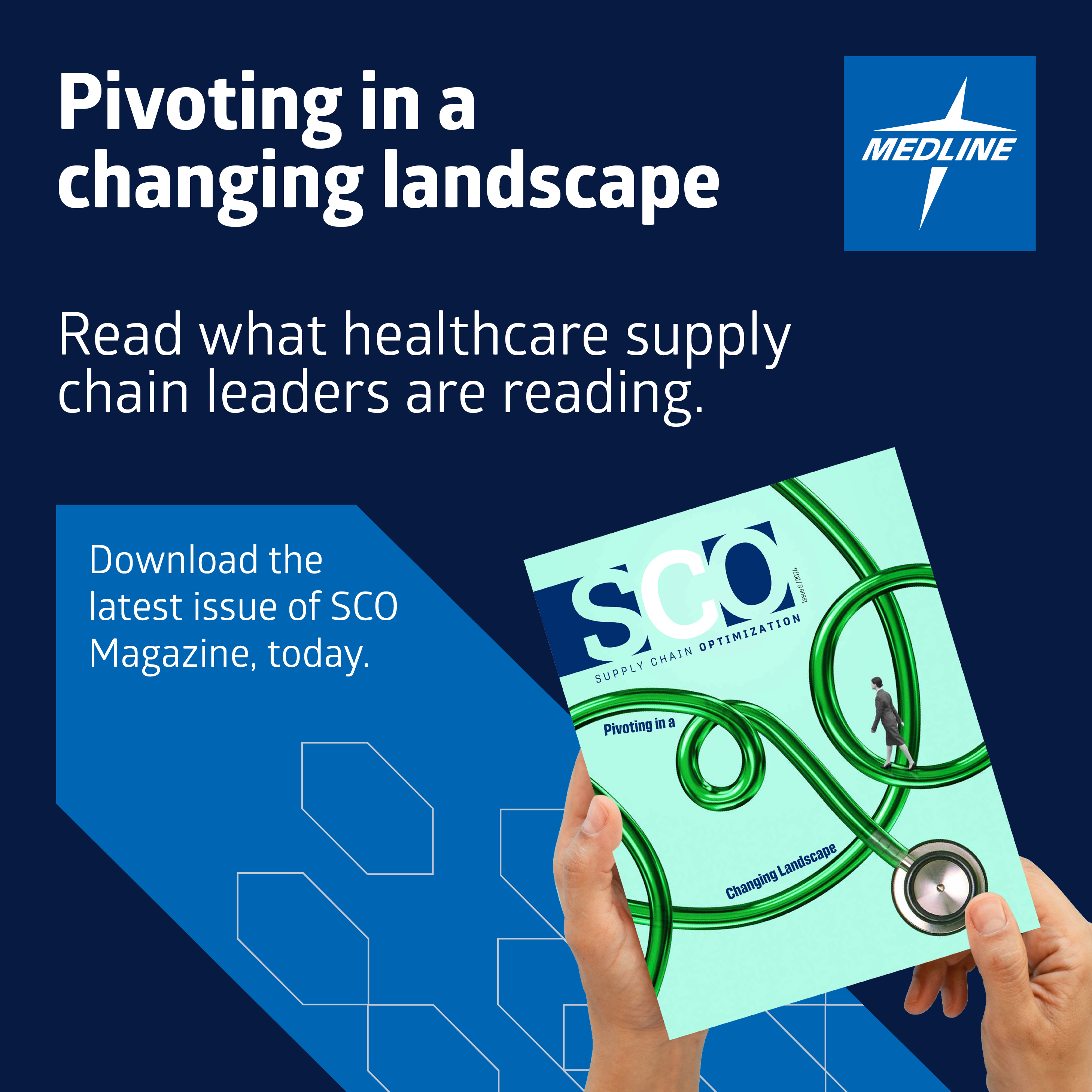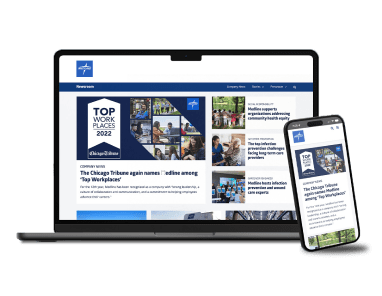3 ways to help bring back in-person family visits

How post-acute care facilities can bring back visitors without undermining their safety strategies
By Medline Newsroom Staff | April 6, 2021
Centers for Medicare and Medicaid Services (CMS) recently released updated guidelines for visitations to nursing homes during the continuing COVID-19 pandemic. As many post-acute facilities are now welcoming families indoors to visit loved ones, Jennifer Conlon, infection preventionist for Athena Health Care Systems, one of New England’s largest privately owned long-term care management companies, shared with the Medline Newsroom three tips for how Athena’s facilities have laid the groundwork for in-person visits in alignment with the CMS guidelines.
1) Designate a safe visitation procedure
“When we started our indoor visits, we had to have a designated area, Conlon said. “It had to be equipped with proper ventilation, whether that meant open windows, air purifiers with HEPA filters or both. Areas would also be cleaned and disinfected after each visit. UV cleaning devices have helped us enhance this disinfection process, and that technology gives residents and visitors additional peace of mind.”
At Athena, visitors are screened for COVID-19 symptoms before meeting with residents. Additionally, Conlon and her staff perform rapid antigen tests on visitors. This extra step is not required under the CMS guidelines, but is an additional suggested step to help avoid COVID-19 spread.
“The antigen tests have been an excellent tool to be able to test the visitors prior to them going to see their loved ones, said Conlon. “With the continued risk of asymptomatic infection, such tests can help lower the overall risk of visitors bringing infections into the facility.”
2) Educate and communicate
Communicating and educating staff is essential as Athena continues to focus on helping them feel comfortable coming to work during such a vulnerable time. Proper infection prevention procedures rely on certain foundational strategies, including hand hygiene. Looking back over the grueling past year, Conlon said the pandemic strengthened her belief in continuous education.
“It can seem like overkill, going over the fundamentals of hand hygiene over and over again, but as humans we often become less conscious of what we touch over time. For us, educating staff on proper hand-hygiene has become a continuous process. It’s not a question of learning it once, but of living it day to day.”
Furthermore, it is also critical to keep open communication with families as many went months without seeing their loved one in person. Their facilities use a variety of outreach methods, including conference calls, email blasts, zoom chats and Facetime. Messaging helped keep family members updated in terms of Department of Public Health and CDC guidelines, safety measures at the facilities and the status of their loved ones.
3) Prepare for hugs
The new CMS guidance also addresses hugs and other close contact between visitors and residents, and states:
“We (CMS) acknowledge the toll that separation and isolation has taken. We also acknowledge that there is no substitute for physical contact, such as the warm embrace between a resident and their loved one. Therefore, if the resident is fully vaccinated, they can choose to have close contact (including touch) with their visitor while wearing a well-fitting face mask and performing hand-hygiene before and after.”
CMS encourages visitors to also get vaccinated prior to their visits, and Conlon thinks the prospect of hugging a loved one for the first time in over a year can be a great motivator for people who are eligible, but have yet to get vaccinated.
“After the year we’ve had, everyone could use a hug, and requiring proof of vaccination to have that kind of contact promotes safety and provides an extra bit of incentive for folks to get vaccinated as soon as possible.”
Learn more about how Medline supports EVS cleaning initiatives.
Medline Newsroom Staff
Medline Newsroom Staff
Medline's newsroom staff researches and reports on the latest news and trends in healthcare.

